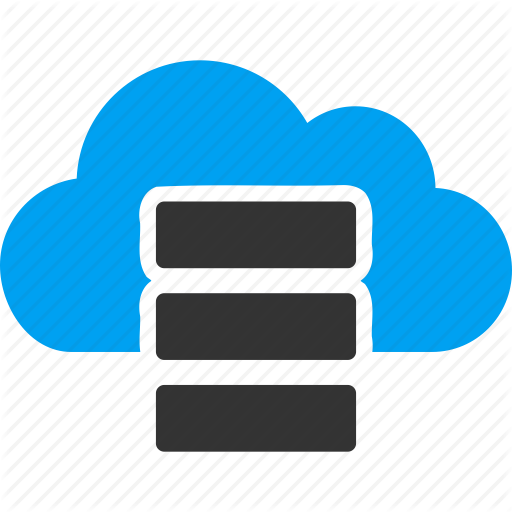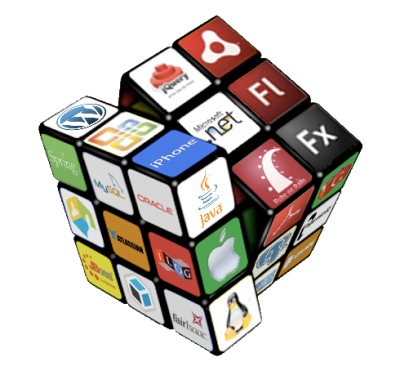 We utilize a wide range of technologies for software design, development, quality assurance, and project management. Our dedicated development teams possess exceptional expertise in tackling complex business tasks using a diverse set of technologies.
We utilize a wide range of technologies for software design, development, quality assurance, and project management. Our dedicated development teams possess exceptional expertise in tackling complex business tasks using a diverse set of technologies.
Having decades of industry experience and completed dozens of software projects, we will provide you with the best technology solutions according to your business requirements.
DreamLogic provides the full software development life cycle (SDLC) - from business process analysis to solution implementation and support.
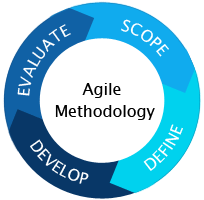 Agile development methodology provides opportunities to assess the direction of
a project throughout the development lifecycle and breaks product development into small
increments that minimize the amount of up-front planning and design.
Agile development methodology provides opportunities to assess the direction of
a project throughout the development lifecycle and breaks product development into small
increments that minimize the amount of up-front planning and design.
This is achieved through regular cadences of work, known as sprints or iterations.
Iterations are short time frames (timeboxes) that typically last from one to four weeks.
Each iteration involves a cross-functional team working in all functions: planning, analysis, design, coding, unit testing, and acceptance testing. At the end of the iteration, a working product is demonstrated to stakeholders. This minimizes overall risk and allows the product to adapt to changes quickly.
Scrum is the most popular way of introducing Agility due to its simplicity and flexibility.
Scrum emphasizes empirical feedback, team self-management, and striving to build properly tested product increments within short iterations.
 The Waterfall model provides a structured approach, the whole process of
software development is divided into separate phases.
The Waterfall model provides a structured approach, the whole process of
software development is divided into separate phases.
Despite the development of new methodologies, the Waterfall is still the dominant process model and it is used in over a third of software development projects.
The model itself progresses linearly through discrete, easily understandable, and explainable phases and thus is easy to understand; it also provides easily identifiable milestones in the development process.
In the Waterfall model, typically, the outcome of one phase acts as the input for the next phase sequentially. Every phase of the project must be completed before the next phase can begin.
The sequential phases in the Waterfall model are:
- Requirement Gathering
- Analysis
- System Design
- Coding and Integration
- Testing
- Installation, migration, support, and maintenance
In common practice, the waterfall methodology results in a project schedule with 20-40% of the time invested for the first two phases, 30-40% of the time to coding, and the rest dedicated to testing and installation.
The actual project organization needs to be highly structured. Most medium and large projects will include a detailed set of procedures and controls, which regulate every process on the project.
GIS, Navigation & Logistics
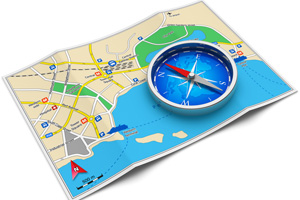 A geographical information system (GIS) is a system designed to capture, store, manipulate,
analyze, manage, and present spatial or geographical data.
A geographical information system (GIS) is a system designed to capture, store, manipulate,
analyze, manage, and present spatial or geographical data.
Education
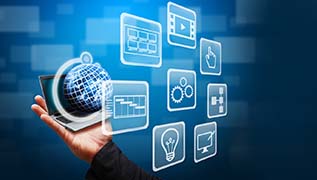 Learning Management System (LMS) is a software application for the administration,
documentation, tracking, reporting, and delivery of online educational courses or training programs.
Learning Management System (LMS) is a software application for the administration,
documentation, tracking, reporting, and delivery of online educational courses or training programs.
Document Management
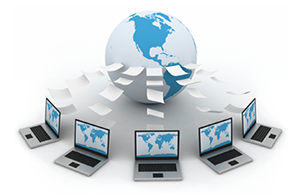 Document Management System (DMS) is used to track, manage and store documents and reduce paper.
Most are capable of keeping a record of the various versions created and modified by different
users (history tracking).
Document Management System (DMS) is used to track, manage and store documents and reduce paper.
Most are capable of keeping a record of the various versions created and modified by different
users (history tracking).
e-Government
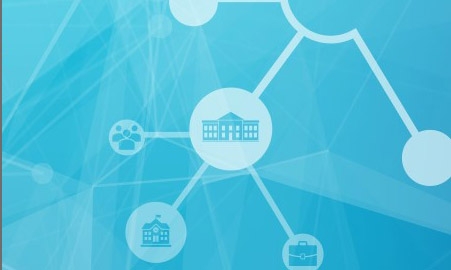 e-Government is the use of information and communication technologies (ICT) to improve the
activities of public sector organizations and provide public services to citizens and others.
e-Government is the use of information and communication technologies (ICT) to improve the
activities of public sector organizations and provide public services to citizens and others.
Other Solutions & Industries
- Healthcare Solutions
- e-Commerce Platforms and Web Shops
- Content Management Platforms
- Enterprise Portals & Intranets
- Mobile Services & Telecom Solutions
- Enterprise BI, BPM, ECM, ERP and CRM Systems
- Cryptography, Digital Signature and PKI Systems
- Defence and Critical Security Systems













